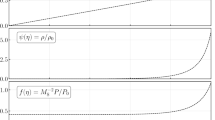Abstract
The quality and durability of coatings produced by many thermal spray techniques could be improved by increasing the velocity with which coating particles impact the substrate. Additionally, better control of the chemical and thermal environment seen by the particles during flight is crucial to the quality of the coating. A high velocity thermal spray device is under development through a Ballistic Missile Defense Organization Small Business Innovation Research (SBIR) project, which provides significantly higher impact velocity for accelerated particles than is currently available with existing thermal spray devices. This device utilizes a pulsed plasma as the accelerative medium for powders introduced into the barrel. Recent experiments using a particle imaging diagnostic system showed that the device can accelerate stainless steel and WC-Co powders to velocities ranging from 1500 to 2200 m/s. These high velocities are accomplished without the use of combustible gases and without the need of a vacuum chamber, while maintaining an inert atmosphere for the particles during acceleration. The high velocities corresponded well to modeling predictions, and these same models suggest that velocities as high as 3000 m/s or higher are possible.
Similar content being viewed by others
References
H. Herman: Scientific American, 1988, 259, pp. 112–17.
M.L. Thorpe: Adv. Mater. Processes, 1993, 143(5), pp. 50–61.
F.D. Witherspoon, D.W. Massey, R.W. Kincaid, G.C. Whichard, and T.A. Mozhi: in Thermal Spray Surface Engineering via Applied Research, C.C. Berndt, ed., ASM International, Materials Park, OH, 2000, pp. 669–78.
R.C. Dykhuizen and M.F. Smith: J. Thermal Spray Technol., 1998, 7(2), pp. 205–12.
R.L. Burton, D. Fleischer, S.A. Goldstein, and D.A. Tidman: J. Propulsion Power, 1990, 6(2), pp. 139–44.
O.F. Rizkalla, W. Chinitz, F.D. Witherspoon, and R.L. Burton: J. Propulsion Power, 1993, 9(5), pp. 731–38.
F.D. Witherspoon and R.L. Burton: “Mach 10 to 20 Electrothermal Wind Tunnel Feasibility Study and Demonstration,” Final Report, vol. II—Experimental Study, GASL TR-342, GT-Devices, Inc., Alexandria, VA, 1991.
S.A. Goldstein, D.A. Tidman, R.L. Burton, D.W. Massey, and N.K. Winsor: “Electric Cartridge Guns Using Fluids Heated by a Capillary Plasma Jet—An Extension of Classical Gun Technology to High Velocities,” GT-Devices Report 83-11, GT-Devices, Inc., Alexandria, VA, 1983.
R.L. Burton, S.A. Goldstein, D.A. Tidman, S.Y. Wang, N.K. Winsor, and F.D. Witherspoon: IEEE Trans. Magn., 1986, Mag-22, pp. 1410–15.
R.L. Burton, S.A. Goldstein, D.A. Tidman, D.W. Massey, N.K. Winsor, and F.D. Witherspoon: “Mass Acceleration in a Multi-Module Plasma Jet for Impact Fusion,” Final Report, DOE Contract No. DE-ACO8-84DP40202, GT-Devices, Inc., Alexandria, VA, 1985.
D.A. Tidman and D.W. Massey: IEEE Trans. Magn., 1993, 29(1), pp. 621–24.
M.L. Thorpe and H.J. Richter: J. Thermal Spray Technol., 1992, 1(2), pp. 161–70.
R.L. Burton, B.K. Hilko, F.D. Witherspoon, and G. Jaafari: IEEE Trans. Plasma Sci., 1991, 19(2), pp. 340–49.
D.A. Tidman and S.A. Goldstein: “Thermal Transport to Hypervelocity Gun Tubes by High Pressure Partially Ionized Gas Flows,” GT-Devices Technical Note GTD 85-4, GT-Devices, Alexandria, VA, 1985.
D.A. Tidman, Y.C. Thio, S.A. Goldstein, and D.S. Spicer: “High Velocity Electrothermal Mass Launchers,” GT-Devices Technical Note GTD 86-7, GT-Devices, Alexandria, VA, 1986.
R.W. Kincaid and F.D. Witherspoon: in Thermal Spray Surface Engineering via Applied Research, C.C. Berndt, ed., ASM International, Materials Park, OH, 2000, pp. 663–68.
D. Fleischer: “Ceramic Insulators for Pulsed Electrothermal Discharges,” GT-Devices Final Report, DNA Contract No. DNA001-86-C-0072, GT-Devices, Alexandria, VA, 1987.
R.L. Burton and S.Y. Wang: “Ceramic Insulators for Pulsed Electrothermal Discharges,” GT-Devices Final Report, NASA Contract No. NAS 3-25272, GT-Devices, Alexandria, VA, 1989.
J.P. Boris: “Flux-Corrected Transport Modules for Solving Generalized Continuity Equations,” NRL Memorandum Report No. 3237, Naval Research Laboratory, Washington, DC, 1976.
J.P. Boris and D.L. Book: J. Comput.Phys., 1973, 11, pp. 38–69.
J.A. Browning: J. Thermal Spray Technol., 1992, 1 (4), pp. 289–92.
A.H. Shapiro: “The Dynamics and Thermodynamics of Compressible Fluid Flow,” John Wiley & Sons, New York, NY, 1953.
F.D. Witherspoon and D.W. Massey: “Pulsed Electrothermal Powder Spray,” U.S. Patent 6,124,563, Sept. 26, 2000.
Author information
Authors and Affiliations
Rights and permissions
About this article
Cite this article
Witherspoon, F.D., Massey, D.W., Kincaid, R.W. et al. High velocity pulsed plasma thermal spray. J Therm Spray Tech 11, 119–128 (2002). https://doi.org/10.1361/105996302770349050
Received:
Revised:
Issue Date:
DOI: https://doi.org/10.1361/105996302770349050




